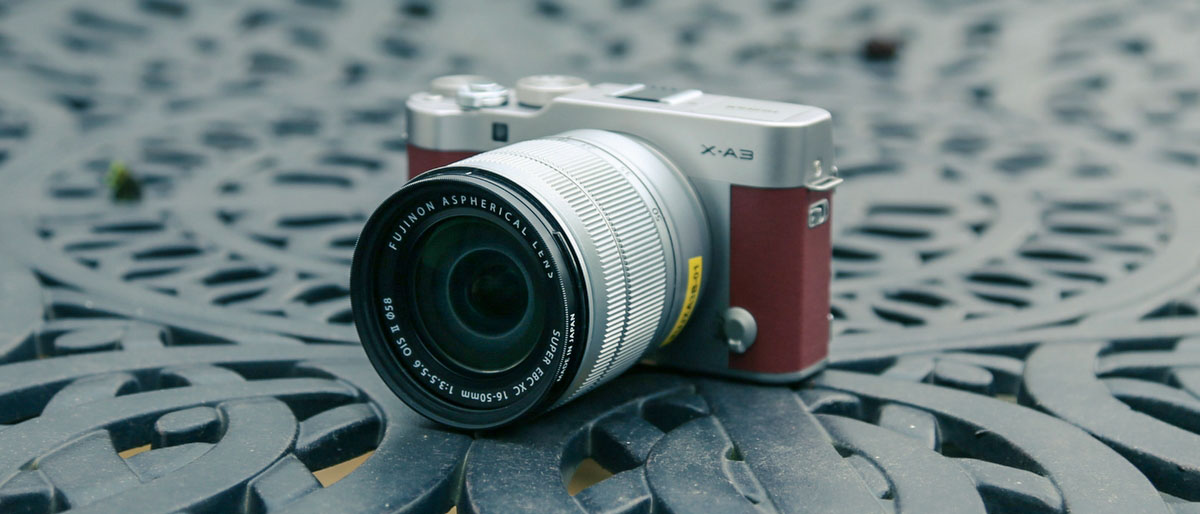TechRadar Verdict
This retro-styled, entry-level mirrorless interchangeable lens system camera with Instagram-style filters and a 'smile' shutter for selfies is aimed at 'phoneographers' after an upgrade, but it will be a learning curve for most. However, consistently reliable images and a lightweight, convenient design make it a good-value option for DSLR owners looking for an occasional travel camera.
Pros
- +
Good image quality
- +
Solid kit lens
- +
Nice-looking design
- +
Great screen
Cons
- -
No 4K video
- -
Plasticky finish in parts
- -
Menu system could be better
Why you can trust TechRadar
The Essential Review
This is TechRadar's review summary, which gives you all the key information you need if you're looking for quick buying advice in 30 seconds – our usual full, in-depth review follows.
The Fujifilm X-A3 is a great camera with a vintage-ish look that produces consistently good images.
Designed as step-up from both a smartphone and a point-and-shoot compact, this entry-level mirrorless camera is reasonably priced, and reasonably easy to get to know, while images can be quickly transferred to a phone via the basic, but comprehensive and reliable, Fujifilm Camera Remote app.
Fujifilm is clearly aiming this advanced camera at those who love taking photos, but who are aware that most of the best snaps they see on Instagram are taken with a 'proper' camera rather than a phone. Hence the attempt to woo the vain with a 180-degree tilting LCD screen and a mostly-effective 'smile' mode that takes a photo if it detects a cheeky grin. Ditto its dozens of Instagram-style filters and best-in-class Film Simulation modes.
Despite these everyman features though, the X-A3's user interface is as retro as its exterior, and will present something of a learning curve for beginners.
There's no built-in electronic viewfinder (you'll have to pay a bit more for something like the Fujifilm X-E3 if you want one), but if you're the kind of photographer who doesn't mind composing their shots on an LCD screen, the X-A3's is pretty good; it's colorful and contrasty, with a wide viewing angle.
Any photo taken on the X-A3 will indeed look much better than a phone can manage, but full creative control isn't as easy as on a DSLR, if that's what you're after. This is certainly a camera aimed at those looking for good-quality photos without getting bogged down in photography basics.
Reasonably small and lightweight, easy to use and – most importantly – supplying reliably detailed and colorful, clean images, the Fujifilm X-A3 has very few annoyances and is a likeable, dependable and good-value camera, with a capable 16-50mm kit lens.
Who's it for and should I buy it?
Fujifilm is clearly aiming this advanced compact at those who love taking photos – including plenty of selfies – and who are ready to make the jump from their smartphone to a 'proper' camera.
However, despite the X-A3 not being exceptionally complicated to operate, it's still a lot to take on for the average 'phoneographer'. Persevere though, and you'll be rewarded with colorful and detailed images that are a huge leap forward from those taken on your smartphone.
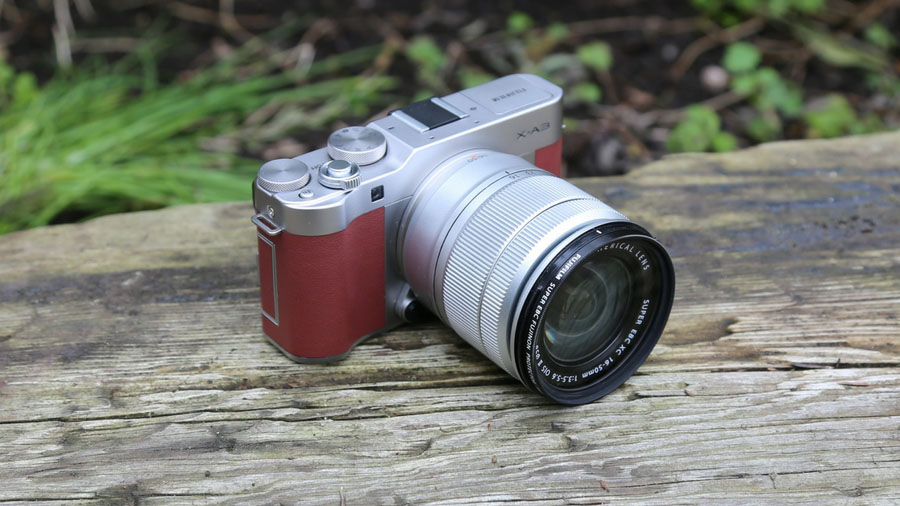
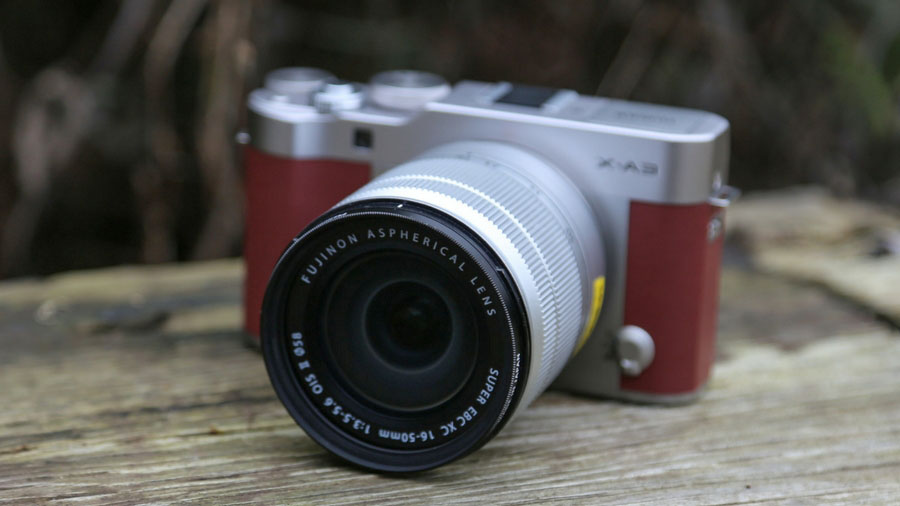
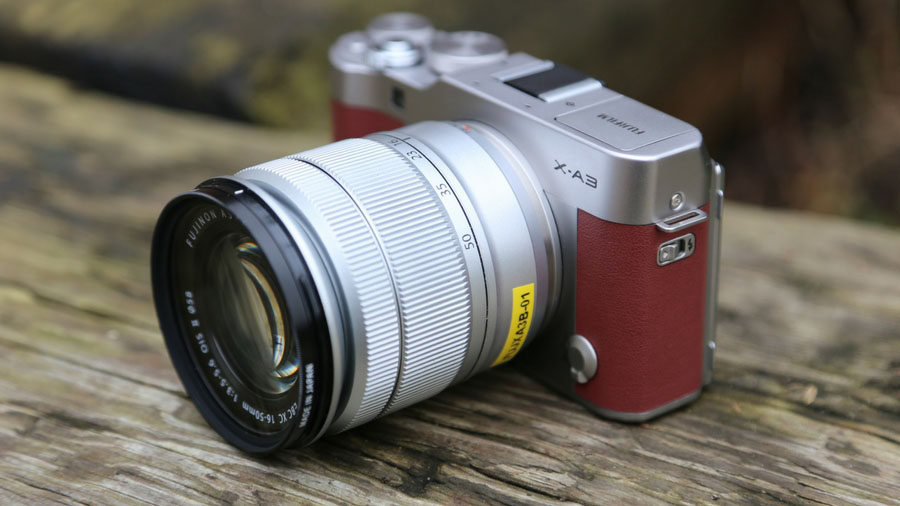
Fujifilm X-A3 price
- Current price: £479 / $549 / AU$949 with 16-50mm lens
A good value mirrorless camera that's all about the images
- APS-C CMOS sensor, 24.2MP
- JPEG and raw files
- 16-50mm kit lens
Sensor: APS-C CMOS, 24.2MP
Kit lens: 16-50mm f/3.5-5.6
Screen: 3-inch tilting touchscreen, 1,040k dots
Viewfinder: No
Continuous shooting: 6fps
Movies: 1080p
Battery life: 410 shots
User level: Beginner/intermediate
For a relatively compact camera, the Fujifilm X-A3 features a large sensor – it's a 24.2MP APS-C sensor, similar in size to those in many DSLRs. While the resolution is identical to that offered by its more expensive siblings like the X-E3, X-T20 and X-T2, there's a subtle difference in the actual design of the sensor. Rather than getting Fujifilm's X-Trans technology, the chip here gets a more standard primary color filter design, and while there's nothing wrong with that per se, it won't quite be a match for its premium siblings in the image quality stakes.
The X-A3 has a native ISO range of 200 to 6400, which is expandable up to ISO25,600 if necessary, though we'd avoid using this other than as a last resort. The autofocus system is generally impressive, if not the quietest.
The camera comes with an XC16-50mm f/3.5-5.6 OIS II lens as standard, which is versatile enough to suit most for everyday photography. However, the beauty of the mirrorless camera genre – aside from the reasonably lightweight, travel-ready form-factor – is the option to swap-out lenses, and, equipped with a standard Fujifilm X Series lens mount, the X-A3 is compatible with more than 30 different lenses.
Unlike models higher up the Fujifilm range, the X-A3 can't shoot video in 4K, just Full HD. That's just as well, as the often-slow X-A3 certainly doesn't have the processing power to handle 4K.
Retro design meets solid and simple handling
- Lightweight at just 339g
- 180-degree tilting touchscreen
- Faux-leather exterior finishes
As with most Fujifilm cameras, there's a touch of retro about the X-A3. Our review sample came in a two-tone brown faux leather and metallic finish (it's also available with black or pink faux leather), and while there are some aluminium parts (including the front cover, top plate and top dials), it does have quite a plasticky feel.
On the right-hand side of the camera is a rigid flap covering a micro USB slot via which you recharge the X-A3 (which we find preferable to a battery charging cradle) alongside a micro HDMI output. The undercarriage holds a compartment for the battery (rated at 410 shots) and a SD card slot.
There's a fairly standard menu system that will be easy enough to master for DSLR owners, but likely off-putting to anyone upgrading from a smartphone
The X-A3's physical controls are limited, both by the size of the body and the camera's ambitions. On the front of the camera, next to the lens, is a tiny dial for toggling between single, continuous and manual shooting, while the back contains shortcuts to autofocus, timer, burst shooting and white balance settings.
There's a fairly standard menu system that will be easy enough to master for DSLR owners, but likely off-putting to anyone upgrading from a smartphone (there are eight pages of multi-screen lists).
There are also buttons to initiate video recording, which is always helpful, and the usual 'quick menu' button for accessing oft-needed tweaks such as ISO, white balance and aspect ratio. A dial on the top of the camera is required to toggle through everything, and using this becomes second nature pretty quickly, while a second dial proved useful for manually adjusting exposure.
The X-A3's LCD screen with 180-degree tilt presents some nifty usability options. For example, you can use the X-A3 to take selfies by turning the LCD screen 180-degrees and pulling it up slightly so that you can see your entire mug (albeit upside-down, but it's enough for framing purposes). Its 'smile mode' for selfies works really well, although in our tests it was also triggered by some random inanimate objects that definitely weren't smiling.
The more serious photographer will appreciate that flip-up screen making it easier to shoot over the heads of crowds, or to get down close to the floor and take shots from unusual angles without having to kneel/lie on the ground.
In our tests with an iPhone the Fujifilm Camera Remote app worked reasonably well; it allowed us to remotely operate the camera and make manual adjustments (most obviously to ISO and exposure compensation), and consistently maintained a connection over Wi-Fi.
It's pretty much a one-page app, and when trying to escape from the remote viewing page the app always wants to disconnect from the camera, although despite this quirk we were able to transfer a batch of images successfully several times in a row.
Image quality
- Images have decent levels of detail
- Film Simulation modes are great
- Panoramic mode
Although we had a few different lens options for this review, we mainly used the 16-50mm kit lens that most buyers will get. This is restricted to f/3.5-5.6 aperture, but proved a good general-purpose lens in our tests.
It features a built-in anti-shake system, and handheld shots impressed, with autofocus working well (though its constant beeps and whirs get annoying). Touchscreen focusing is also possible, though it's best avoided if you want maximum sharpness.

Click here for the full-size image

Click here for the full-size image

Click here for the full-size image

Click here for the full-size image
In another nod to the Instagram generation, the X-A3 has a decent selection of artistic filters. There are 10, including Nostalgic (to who?) Toy Camera, Miniature, which adds graduated blurring to give scenes the appearance of table-top models, and a Fisheye distortion effect. In addition you get Fujifilm's excellent Film Simulation modes, which provide more subtle and satisfying results, with 11 options to choose from.
The X-A3 does have a few other 'novelty' modes, and for the most part they work well. Hidden in the Advanced Filter menus is a Panoramic drag-and-drop mode, which makes a very loud fake shutter noise (the volume of which can be turned down), and produces a fairly soft image. There are also a plethora of selfie modes.

Not convinced? Try these
If the Fujifilm X-A3 mirrorless camera isn’t for you, here are three excellent alternatives for you to consider...

Fujifilm X-E3
The next step up from the X-A3 in Fujifilm's X Series range, this is a fabulous little camera, with a lovely finish and nice handling. Image quality is excellent too.
Read our in-depth Fujifilm X-E3 review
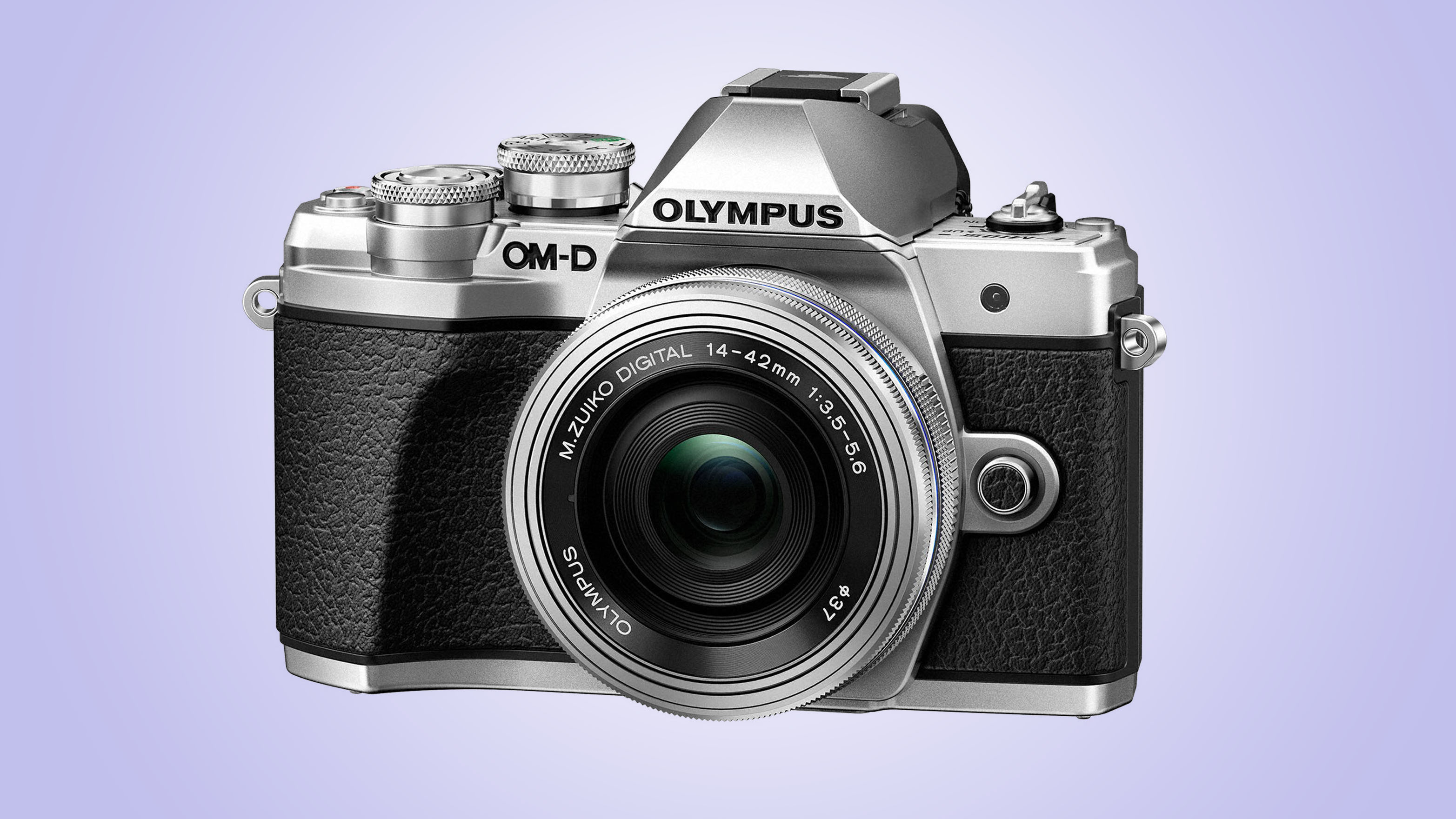
Olympus OM-D E-M10 Mark III
Olympus has refined and tweaked one of our favorite mirrorless cameras to make it an even more tempting proposition.
Read our in-depth Olympus OM-D E-M10 Mark III review
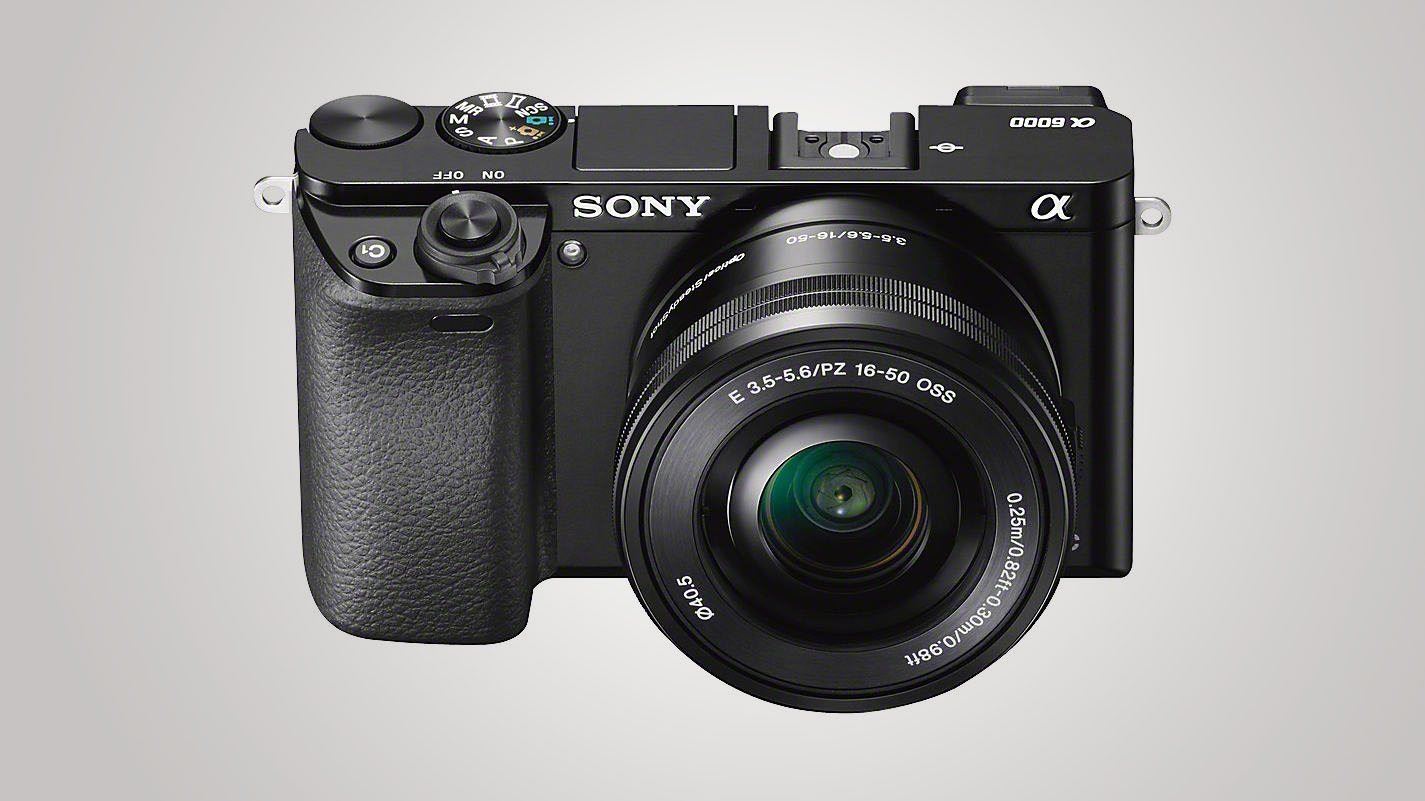
Sony Alpha A6000
Sony's Alpha A6000 is a great little mirrorless camera that delivers excellent performance.
Read our in-depth Sony Alpha A6000 review
Jamie is a freelance tech, travel and space journalist based in the UK. He’s been writing regularly for Techradar since it was launched in 2008 and also writes regularly for Forbes, The Telegraph, the South China Morning Post, Sky & Telescope and the Sky At Night magazine as well as other Future titles T3, Digital Camera World, All About Space and Space.com. He also edits two of his own websites, TravGear.com and WhenIsTheNextEclipse.com that reflect his obsession with travel gear and solar eclipse travel. He is the author of A Stargazing Program For Beginners (Springer, 2015),
